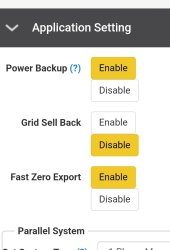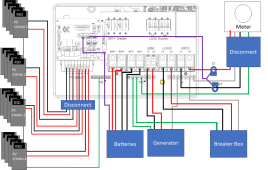That is the intent. The idea is that the inverter is between the meter and the main breaker box. Unless the grid goes down, this hybrid inverter runs in parallel with the grid (Both the grid and the inverter can supply power). If the inverter is not generating enough power, the grid will make up the difference. If the inverter is making more than the loads need it will back-feed the thread. If the inverter is set to zero export, it will generate just enough power to drive the current to zero at the point the CTs are hooked up.
When the inverter detects a grid failure, it will disconnect from the grid. At that point, the only power available to the loads on the output is the power from the inverter. For many households, the 12K (and the surge capability) will cover all the needs. However, some people may need to shed some of the larger loads in order to stay within the capabilities of the inverter.





